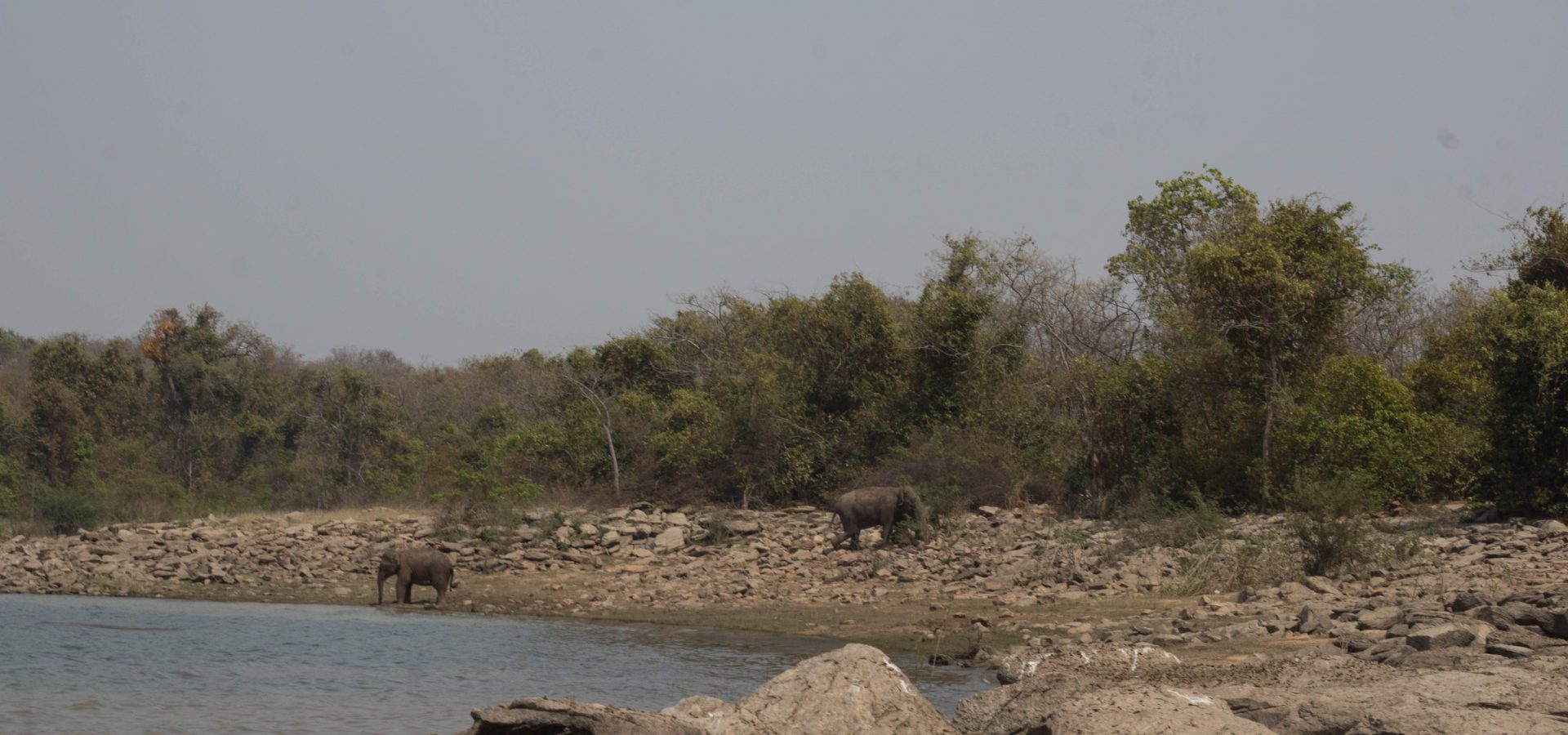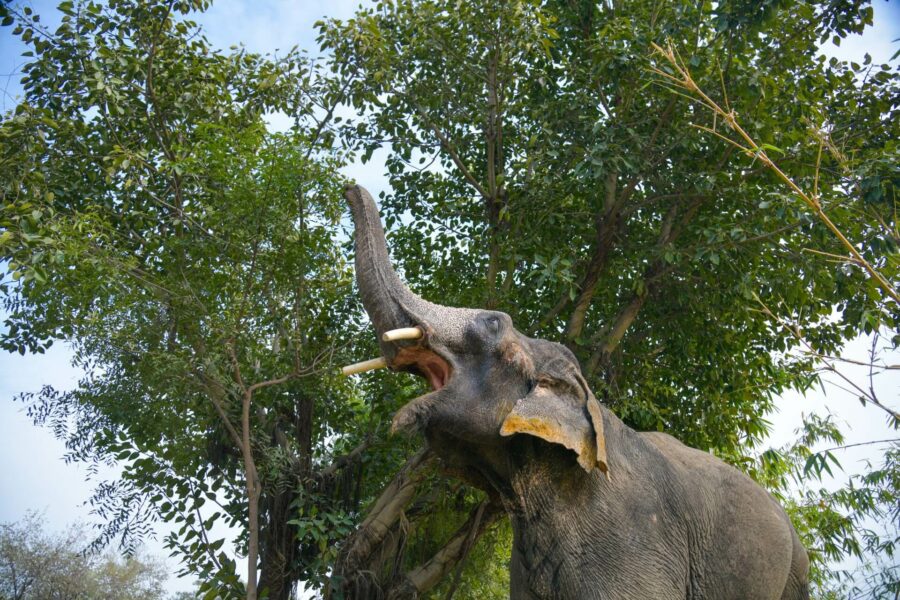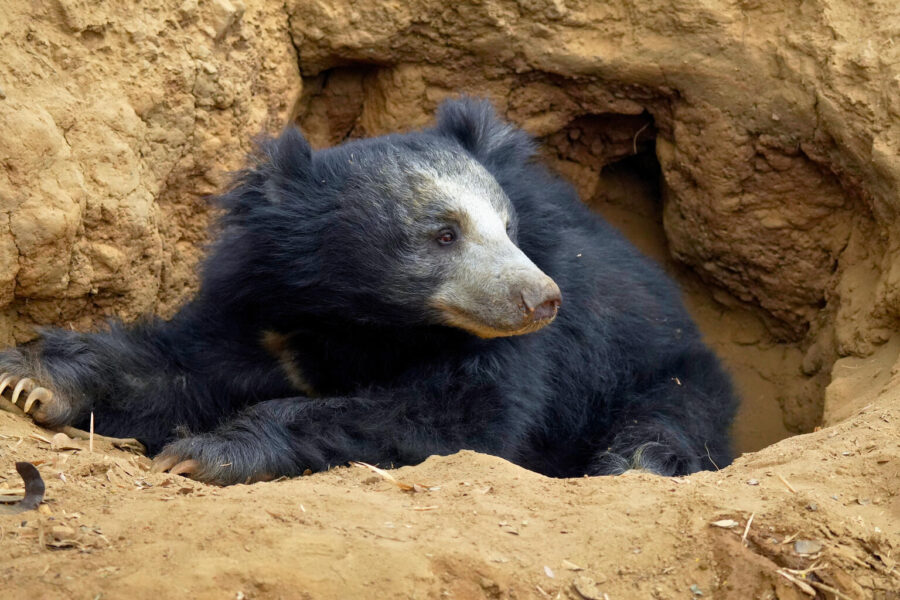In the vast lands of southern India, roam the continent’s largest land creatures: Elephants. They move from one forest patch to another along with their fellow herd members. While foraging vegetation to satiate their hefty appetite, they venture into an agricultural field and raid the freshly grown crops. The locals and farmers are startled and worried. As a consequence, they resort to peculiar measures to drive elephants away, leading to rising human-elephant conflict (HEC).
The burgeoning human population demands more land for agriculture along with development. This has led to reducing the once vast natural habitats into small habitat islands, and has made people vulnerable to conflict with wildlife in human-dominated landscapes.
Impact
With its largest population inhabiting India, the Asian Elephant faces numerous threats. The species is listed as ‘Endangered’ on IUCN Red List due to rampant habitat loss and fragmentation, poaching, and human-wildlife conflict. Human-elephant conflict occurs when people and elephants interact in a manner that negatively impacts either or both. Conflict generally results from poaching or retaliatory killing, and leads to injury or death of humans as well as elephants.
Several studies have identified crop-raiding as the most prevalent cause of human-elephant conflict. Crop-raiding results not only in damage to crops, but often inculcates a negative perspective about elephants amongst locals. Each year, over 600 humans and 450 elephants are known to have been killed while crops were raided by elephants in Asia, with more than 80% of cases recorded from India and Sri Lanka. Crop-raiding by elephants can cause damage amounting to a million dollars.
Factors Influencing Crop-Raiding
A research was undertaken by Ashokkumar Mohanarangan and Swaminathan Shanmugavelu from Wildlife SOS, Sakthivel Chinnaiyan from Sathyamangalam Tiger Reserve, Sudhakar Kaliyaperumal from Bombay Natural History Society, and Ajay A. Desai from WWF in the Mudumalai Tiger Reserve in Tamil Nadu. As per the research, the preferred food crops eaten by elephants significantly changed from the early 1990s to the 2000s. This change is due to the modification of cropping patterns by locals residing in the nearby area. Earlier, elephants largely consumed finger millet, paddy, maize, horse gram, and cotton. However, now, plantain, paddy, beans, areca nut, and coconut are being fed upon because of their larger plantations. These palatable crop species are 391% raided more frequently than the non-palatable species.
The presence of fruiting trees in agricultural areas has been found to attract elephants, thus resulting in crop-raiding and damage. The study notes that 8% of the total incidents of crop damage recorded were due to fruiting trees or sprouting bamboo. Damage due to Jackfruit fruiting was the highest, followed by Tamarind and Mango fruiting.
Strategies to Protect Crops
To prevent crop-raiding by elephants and mitigate damage, locals employ several methods to protect their agricultural fields. Electric fencing, ordinary fencing with guarding and guarding using tripwire alarms are the most commonly used ones. Fields installed with these protective measures were found to be 22% less frequently damaged than those without any protection.
Most people prefer to utilise electric fences, which are followed by ordinary fences and guarding. Tripwire alarms are a traditional method used by locals that involve setting up an explosive firecracker along with a wire on the border of the crop field. While this may or may not frighten the elephant, it helps to alert the villagers if a herd approaches.
In some cases, the research recorded retaliatory actions taken up by people such as firing gunshots and installation of high-voltage electrified fences, which are illegal. Although gunshots do not kill the elephants, the injuries result in infections and make the animal weak. It has been reported that the use of high-voltage electrified fences around a village crop field had electrocuted a female elephant.
Crop-Raiding in Chhattisgarh
Mr. Swaminathan Shamugavelu, Wildlife Biologist at Wildlife SOS, along with his team, has been involved in radio-collaring and tracking two elephant herds in Chhattisgarh. Mr. Swaminathan says, “The two herds we’re tracking, ME4 and Tony, have both migrated from Odisha and are still establishing their ranges. The Tony herd is known to be more dominant, thus pushing ME4 herd towards the forests in Maharashtra. While the herd size is more or less similar, Tony herd is a habitual raider, often venturing in close by villages and small forested areas. This is a result of lack of space and increase in competition for resources.”
Since 2017, Wildlife SOS has been working with the forest department in Chhattisgarh to mitigate human-elephant conflict. Our research team thoroughly evaluates crop-raiding patterns in the study area, revealing nuanced connections between agriculture, vegetation, and elephants. This analysis can provide insights into reasons for elephants’ distribution patterns and movements in the study area and shed light on obstacles being faced in elephant conservation.
Through interviews and discussions with the local population, the Wildlife SOS team found that crop damage due to elephants was the primary concern plaguing villagers. In 2018, a total of 2,396 cases of crop damage were reported in 62 villages. In 2019, the number of crop damage cases was 4,785 from 115 villages. In 2020, a few years after the successful radio-collaring and the setting up of an Early Warning System (EWS) that alerted villagers about the movement of the elephant herd, the numbers dipped to only 1,535 cases from 123 villages.
Reducing Human-Elephant Conflict
Human-elephant conflict has several social, economic and conservation-based consequences. The presence of elephants near human settlements is known to disrupt the daily activities that locals engage in. Here are some steps that people, especially owners of agricultural fields, can undertake:
- Voluntarily relocate to areas with comparatively less chances of HEC.
- Since fruiting trees in agricultural areas attract elephants, planting them outside the fenced area (electric fence/ordinary fence) is advisable.
- Removal of fruits from trees before they ripen.
- Building an elephant-proof trench to stop elephants from raiding.
- Being aware of elephant behaviour and interactions.
The authors of the research paper have also collated suggestions for the management:
- Resettlement of the nearby villages.
- Identify animals that cause habitual raiding and conflict and try new approaches to stop them.
- Maintain wildlife corridors that permit elephant movement.
- Address human-wildlife conflict associated with other animals like wild boars.
- Develop a stronger partnership between the forest department and local communities.
Implementing conflict mitigation strategies effectively and sustainably is the need of the hour as human interaction with wildlife continues to rise. In those areas that are susceptible to human-elephant conflict, the approach adopted must consider sustaining the livelihood of the local communities.
Support our research projects by making a donation.





